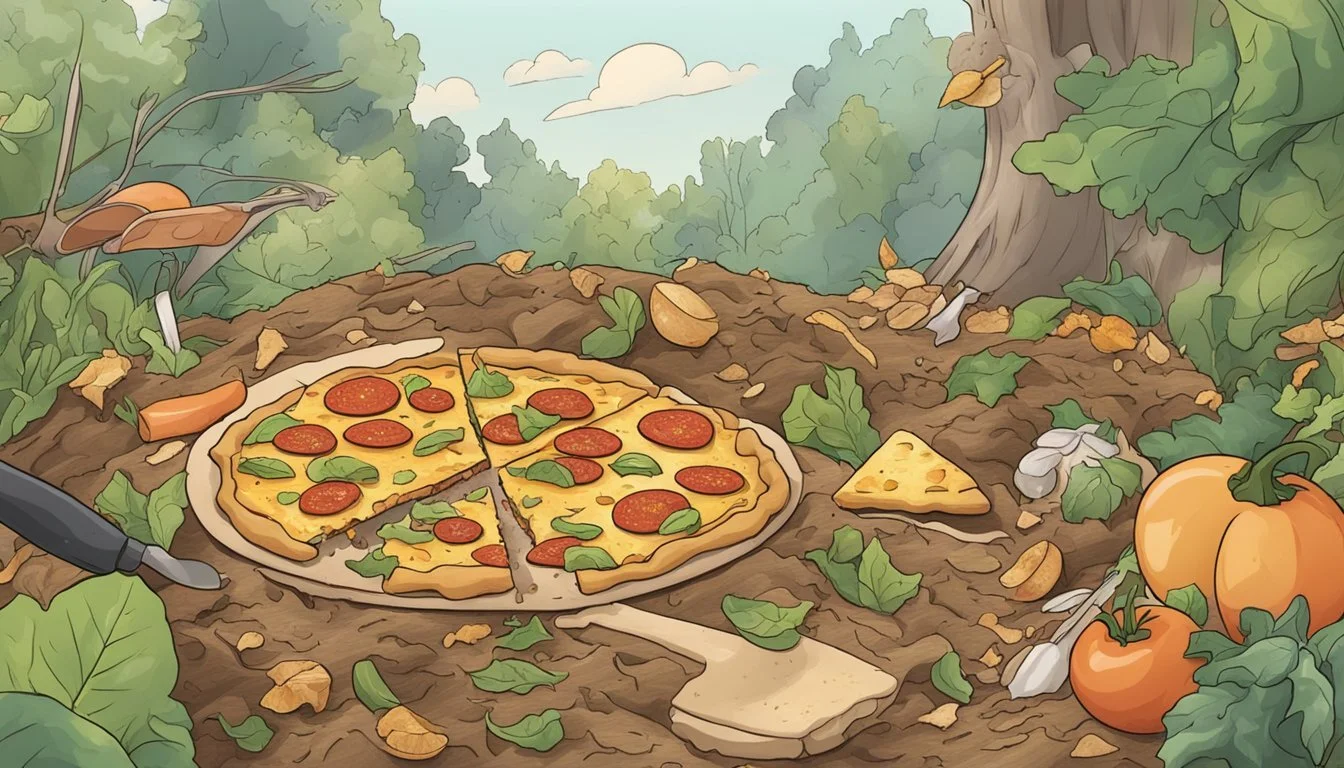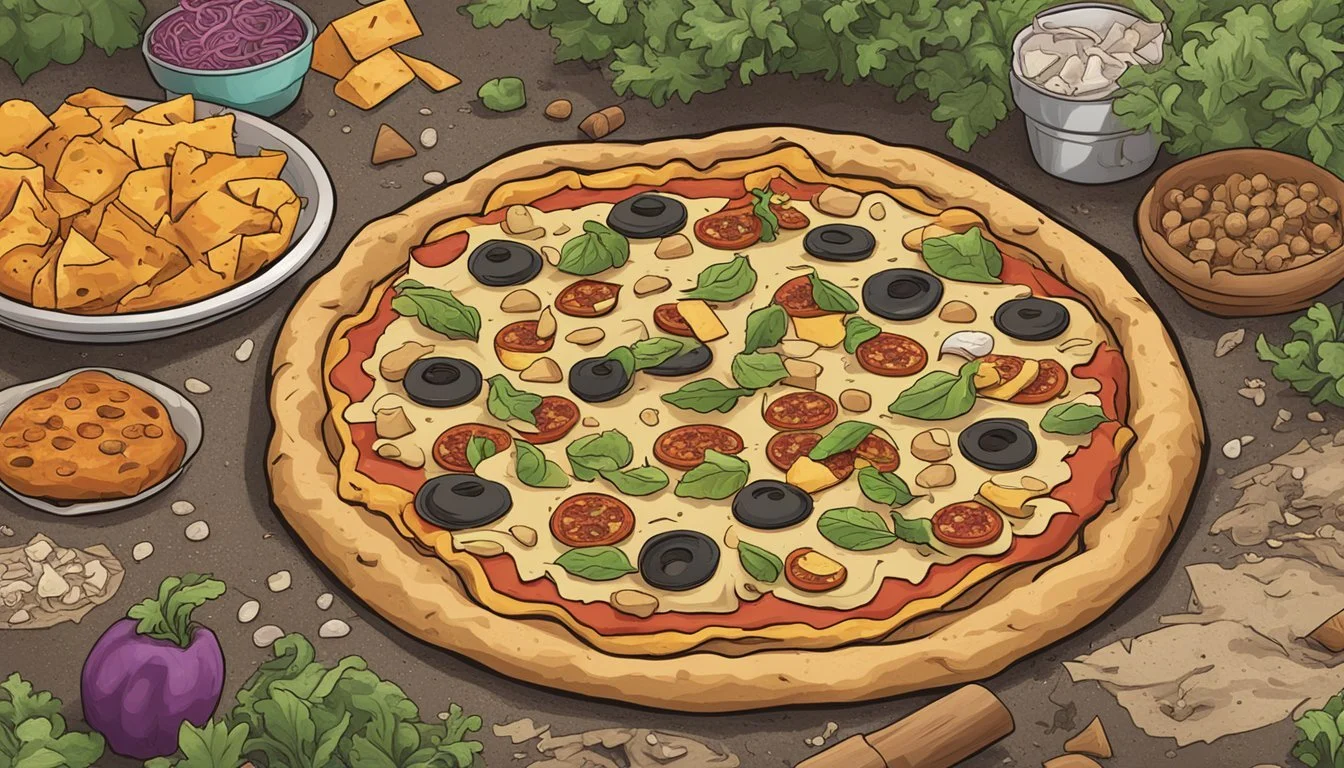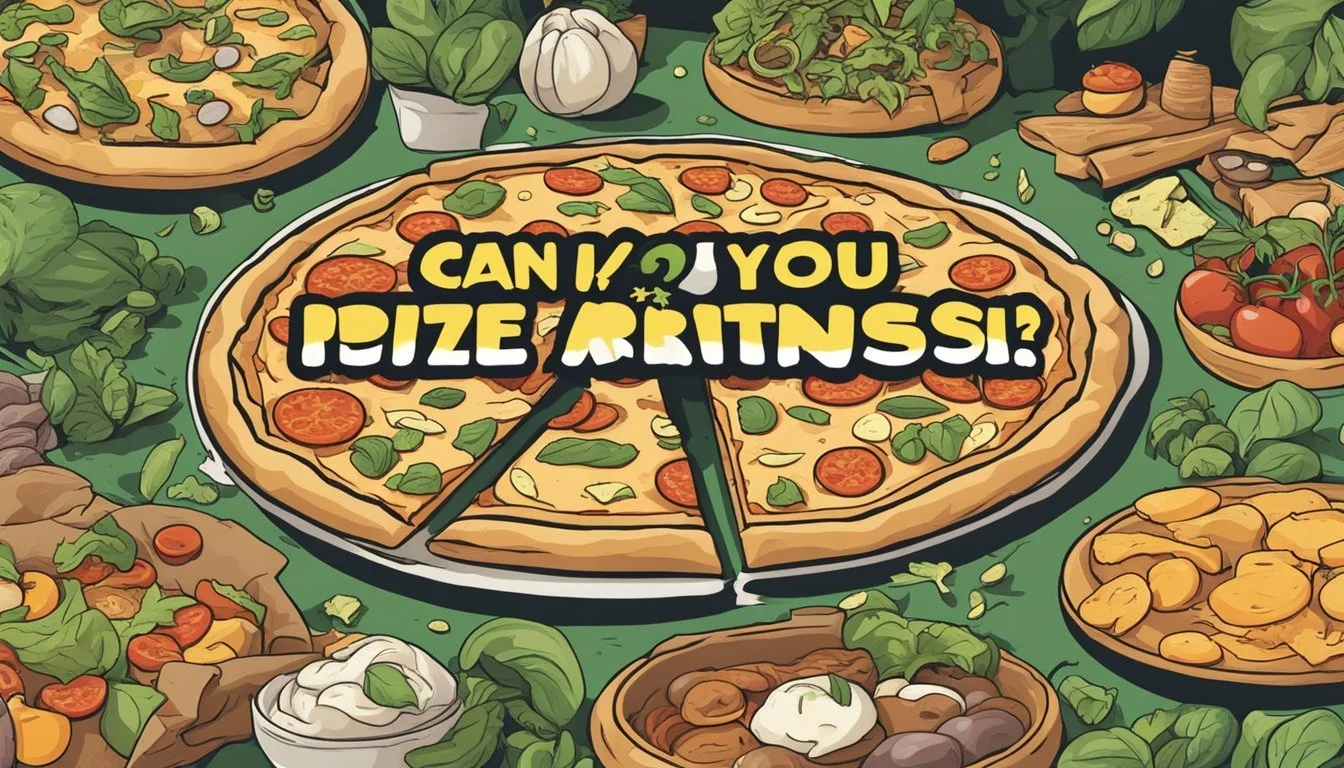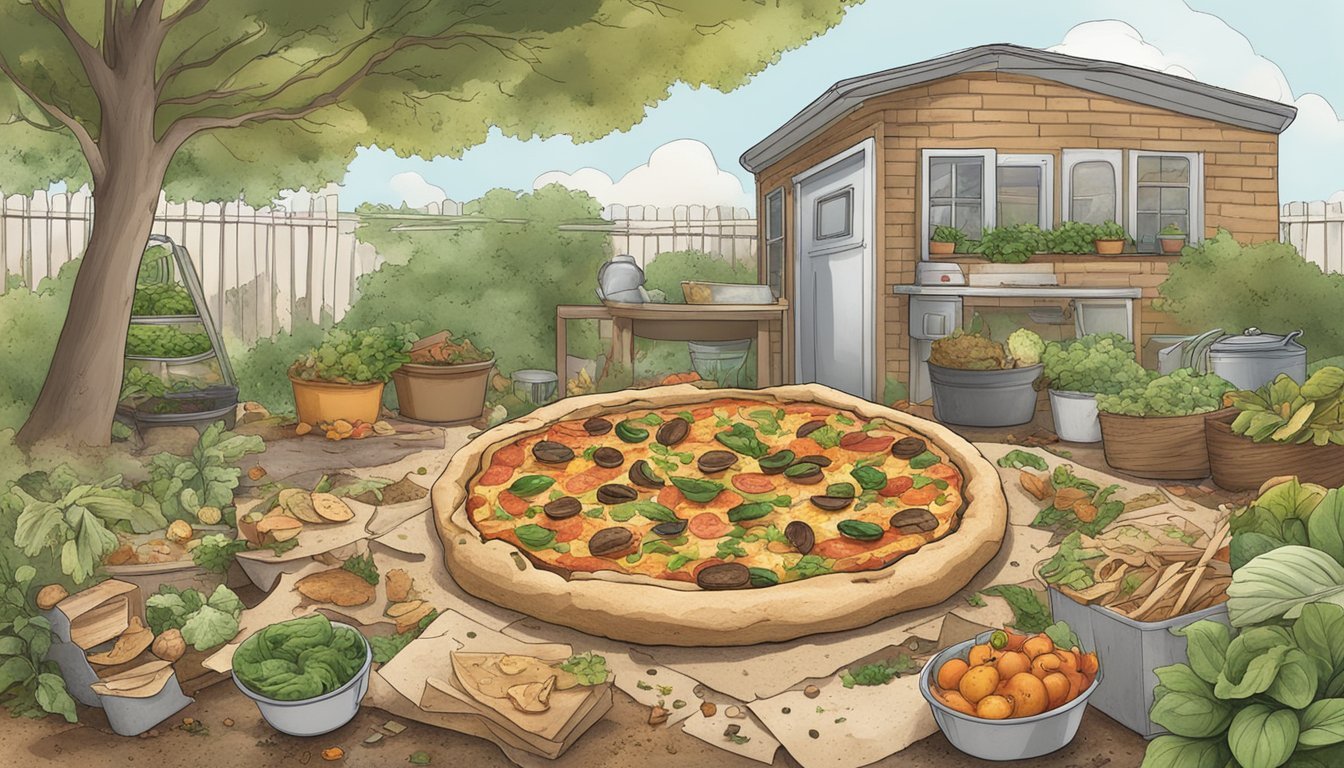Can You Compost Pizza Crusts?
Unveiling the Best Practices for Food Waste Recycling
Composting is an environmentally friendly method to recycle organic waste into nutrient-rich soil for gardens. When it comes to composting pizza (What wine goes well with pizza?) crusts, the process is not only doable but also beneficial. The crust, essentially bread, is a source of carbon, which is a crucial element in the composting process. It helps balance the nitrogen from green materials, such as vegetable scraps and grass clippings, ensuring a well-rounded decomposition.
However, it's important to consider the condition of the pizza crust before adding it to a compost pile. Clean, uneaten crusts without greasy elements or toppings can be composted successfully. They break down over time and contribute to creating a healthy compost. One must be cautious of potential issues associated with composting food scraps, such as attracting pests. To prevent this, crusts should be buried within the center of the compost pile, which can deter pests and facilitate the composting process. It's essential to understand the proper methods and the type of food waste that is suitable for composting to maintain an efficient and odor-free compost bin.
Understanding Composting
Composting is the biological process of breaking down organic matter into nutrient-rich soil. It involves managing organic waste to promote decomposition, producing compost useful for enhancing soil health and fertility.
Fundamentals of Composting
Composting requires three primary components: organic matter, microorganisms, and the right environmental conditions. The microorganisms break down organic waste into simpler substances, which eventually turns into compost. Essential factors for effective composting include:
Moisture: Optimal moisture levels are crucial, as too little hampers the microbial activity and too much can create anaerobic conditions.
Oxygen: Adequate aeration ensures aerobic decomposition, preventing unpleasant odors.
Temperature: A warm environment speeds up decomposition, but extreme heat can kill beneficial microorganisms.
Proper management of these factors helps ensure efficient decomposition and quality compost production.
The Role of Organic Matter in Composting
Organic matter is the backbone of a compost pile. It comprises materials such as:
Greens (Nitrogen-rich): Food scraps, grass clippings, and coffee grounds.
Browns (Carbon-rich): Dry leaves, twigs, paper, and cardboard.
The decomposition of organic matter is carried out by a variety of microorganisms, including bacteria, fungi, and insects, which feed on the matter and convert it into humus, a complex organic compound. This decay process not only reduces waste but also recycles nutrients back into the ecosystem.
Balancing Carbon and Nitrogen
A balance between carbon and nitrogen is vital in a compost pile to foster the right environment for microorganisms. The ideal carbon to nitrogen ratio (C) is 25-30:1. Here are the roles of both:
Carbon: Provides energy for microorganisms. It's found in "browns" like leaves and branches.
Nitrogen: Is a protein source for microorganism growth and is abundant in "greens" like food waste.
Material Type Examples Carbon or Nitrogen Greens Vegetable scraps, grass clippings Nitrogen Browns Dry leaves, straw, sawdust Carbon
Maintaining this ratio supports a faster and odor-free decomposition process, resulting in high-quality compost that is rich in nutrients and beneficial for soil enrichment.
Composting Pizza Crusts
When it comes to food waste like leftover pizza, many wonder if these items can be responsibly returned to the earth through composting. Pizza crusts—being bread-based—are generally suitable for composting, but there are certain caveats.
Can Pizza Crusts Be Composted?
Yes, pizza crusts can be composted as they are considered a brown compost material. The bread breaks down into carbon-rich substances that provide energy for the microbes that drive the composting process. However, it is important to ensure that:
The crusts are free from grease.
There are no toppings such as cheese or meat on them.
The composition of a simple pizza crust, which is primarily dough, makes it an excellent candidate for compost piles.
Challenges with Composting Pizza Crusts
While pizza crusts can be composted, they present certain challenges:
Greasy pizza boxes: Though they hold the crusts, greasy boxes shouldn't be composted.
Toppings: Leftover pieces with meat or cheese can attract pests to the compost pile due to their strong scent.
Careful consideration of these factors is crucial for successful composting. It is advisable to remove any toppings and excess grease before adding pizza crusts to your compost heap to avoid these complications.
Addressing Contaminants
When composting pizza crusts, it is crucial to consider the presence of grease, cheese, and non-organic materials, as they can contaminate the compost pile.
Dealing with Grease and Cheese
Grease and cheese are common contaminants found in leftover pizza crusts. These substances can attract unwanted pests to the compost bin and may also cause a foul odor as they decompose:
Grease: It should be minimized in the compost pile. If the pizza crust is overly greasy, it is best to exclude it from the compost to prevent pest issues.
Cheese: Dairy products like cheese can also attract pests and create an imbalance in the compost pile. Composting pizza crusts with minimal cheese is preferable.
Avoiding Contamination from Non-Organic Materials
Food scraps, particularly pizza crusts, often come in contact with non-organic materials that should be kept out of the compost pile:
Plastic: Remove any plastic wrapping or stickers from pizza crusts before composting, as plastic does not break down and can contaminate the soil.
Greasy Pizza Boxes: Cardboard can be composted, but greasy sections should be removed. Only sections of pizza boxes that are free of heavy grease and food residues should be added to the compost pile.
By vigilantly managing these contaminants, individuals can successfully compost pizza crusts and contribute to a healthier environment.
Composting Methods
Composting pizza crusts can be achieved through various methods, each tailored to different environments and levels of involvement. The three principal techniques include traditional composting, worm composting, and Bokashi composting.
Traditional Composting
Traditional composting involves creating a compost pile or using a composter where organic materials, including non-greasy pizza crusts, are layered and left to decompose naturally. Essential elements for successful composting include:
Balance: A mix of greens (nitrogen-rich materials) and browns (carbon-rich materials)
Aeration: Regular turning of the compost pile to incorporate oxygen
Moisture: Keeping the pile moist, but not wet
Volume: Larger piles retain heat better, accelerating the decomposition process
Pizza crusts should be buried within the pile to avoid attracting pests.
Worm Composting (Vermicomposting)
Vermicomposting uses worms, specifically red wigglers, to break down organic waste, turning it into nutrient-rich castings for the garden. Key factors in vermicomposting include:
Worms: Maintaining a healthy worm population in a compost container
Bedding: Providing a mix of shredded newspaper, cardboard, or coconut coir for the worms to live in
Feeding: Moderately adding food scraps like pizza crusts to avoid overfeeding
Conditions: Ensuring a balanced environment that's not too wet or dry
This method is optimal for indoor composting and is highly efficient in breaking down pizza crusts when managed properly.
Bokashi Composting
Bokashi composting is an anaerobic process that ferments organic waste, including cooked foods like pizza crust, using a special inoculated bran. The method involves:
Bokashi Bran: Sprinkling bran over each layer of waste in a sealed container
Seal: Using an airtight compost container to promote fermentation
Drainage: Regularly draining liquid to prevent putrefaction
Soil Burial: After fermentation, burying the contents in garden soil where it further breaks down
This method is less common but effective for those dealing with a variety of kitchen waste, including pizza crusts.
Pizza Boxes and Composting
Composting pizza boxes can be accomplished successfully by paying attention to the condition of the cardboard and understanding the prints and adhesives involved.
Composting Cardboard Pizza Boxes
When considering composting pizza boxes, one must first determine the cleanliness of the cardboard. A clean box is one without excessive grease or food residue and is ideal for composting. Recycling pizza boxes is only an option when they are clean, as contamination from oils and food scraps can disrupt the recycling process.
Clean Pizza Box: Sections without grease or stuck-on food can be directly added to the compost pile.
Greasy or Dirty Box: It's necessary to remove greasy portions or food remnants from the cardboard box. The clean parts can then be composted.
Composting Tips:
Tear the cardboard into small pieces to help it break down faster.
Bury food-contaminated cardboard deep in the compost pile to prevent attracting pests.
Handling Inks and Additives
Besides the cleanliness of the cardboard, the inks and adhesives used on pizza boxes are essential considerations for composting.
Inks: Many pizza boxes use soy-based ink, which is non-toxic and safe for composting.
Adhesives and Additives:
Safe: Cardboard boxes with minimal, non-toxic adhesives can be composted.
Questionable: If the box has a significant amount of tape, labels, or unknown additives, it's better to remove these before composting.
It's crucial to only compost materials that will not introduce toxic substances into the compost pile, thereby ensuring a safe end-product for gardening and environmental health.
Compost Use and Benefits
Compost serves as a powerful tool in the cycle of organic matter repurposing. It offers numerous benefits including soil enrichment and improved garden health.
Enriching Soil with Compost
Compost is an excellent amendment for soil. It provides a diverse array of microorganisms that enhance soil structure and fertility. Adding compost to soil introduces essential nutrients that plants require for growth. The compost acts as a natural fertilizer, teeming with nitrogen, phosphorus, and potassium.
Nitrogen-rich and carbon-rich materials in the compost help maintain balanced nutrition for the soil.
Compost improves soil aeration and water retention, making it easier for roots to grow.
It bolsters the soil's ability to hold nutrients in place, reducing the need for synthetic fertilizers.
Using Compost in Gardens and Landscaping
In gardens, compost has multifaceted uses:
Mulch: Applying a layer of compost around plants helps retain soil moisture and suppress weeds.
Fertilizer: Mixing compost into garden beds provides a slow-release of nutrients, which is less likely to cause nutrient run-off.
Soil Conditioner: For gardens with poor or compacted soil, compost improves texture and fertility, promoting healthier plant growth.
Raised Beds: Incorporating compost in raised beds ensures a nutrient-rich and well-draining environment for plants.
By routinely amending garden beds with compost, gardeners can create a thriving ecosystem that supports robust plant growth and resilience against pests and diseases.
Troubleshooting Common Issues
When composting pizza crusts, two primary concerns often arise: odors and pests. Addressing these issues promptly can prevent them from escalating into more serious problems, such as attracting unwanted critters or creating unpleasant smells that could lead to contamination.
Managing Odors
If the compost bin starts to emit a foul smell, it may be due to an imbalance in the compost’s composition. Troubleshooting odors involves assessing the moisture level and material balance within the bin. To counteract odor issues:
Adjust moisture levels: Composts should be damp, but not wet. If the compost is too dry, add water or moisture-rich scraps. If it's too wet, add brown materials like dry leaves or shredded newspaper to absorb excess moisture.
Balance materials: Ensure a balance between green (nitrogen-rich) and brown (carbon-rich) materials. Too many green materials, such as pizza crusts, can cause ammonia-like odors. Adding more brown materials can mitigate this problem.
Deterring Pests and Critters
Pizza crusts can be an attractive food source for pests and critters if not managed properly in a compost bin. Prevention and control tactics are essential:
Use enclosed bins or tumblers: These can protect compost from being accessed by animals.
Maintain cleanliness: Regularly clean the area around the compost bin to avoid attracting pests with food scraps or residue.
Bury food waste: Dig into the compost and bury food scraps under other compost material to hide them from pests.
By following these steps, one can maintain a healthier compost bin, free from the common issues that accompany composting food waste like pizza crusts.
Eco-Friendly Practices
When it comes to managing organic waste such as pizza crusts, eco-friendly practices involve strategic composting and reduction of landfill contribution.
The Environmental Impact of Composting
Composting is a process that transforms organic waste into nutrient-rich soil amendment, having a positive impact on the environment. It does so by harnessing the biodegradability of food residues, including pizza crusts, which are rich in carbohydrates and serve as an energy source for the microorganisms in the compost bin. Through composting, the environmental footprint of waste disposal is reduced as it prevents the emission of methane, a potent greenhouse gas, that would be produced if these biodegradable wastes were sent to landfills.
Reducing Landfill Waste
The practice of composting directly contributes to the reduction of landfill waste. Organic waste such as pizza crusts occupy space in landfills, which are already scarce. By diverting biodegradable waste like food residues to compost instead of the green bin meant for landfills, one can significantly diminish their personal contribution to landfill mass. This not only conserves space but also reduces pollution and preserves soil health, aligning with eco-friendly and recycling principles to support a sustainable ecosystem.
Step-By-Step Guide
Composting pizza crusts transforms kitchen scraps into nutrient-rich organic matter beneficial for soil health. This guide provides specific steps to ensure successful composting of pizza crusts.
Preparing Pizza Crusts for Composting
Before adding pizza crusts to a compost container, they should be broken down into smaller pieces to accelerate decomposition. One should:
Remove any non-organic materials, such as plastic or foil.
Tear or cut the crusts into 1-2 inch pieces.
Check for excess grease and remove it when possible, as grease can attract pests and slow down the composting process.
Note: Pizza crusts with toppings should have these removed if they include meats or a lot of dairy, which are not recommended for a standard compost bin due to potential odor and pest problems.
Maintaining Your Compost
After preparing the pizza crusts, maintaining the compost pile is essential for efficient decomposition. Follow these steps:
Layering: Add the crust pieces along with other food scraps, alternating with layers of 'brown' materials, like dry leaves or shredded paper, to maintain a balanced carbon to nitrogen ratio.
Moisture: Ensure the compost remains moist, neither too wet nor too dry, similar to the consistency of a wrung-out sponge.
Aeration: Turn or mix the compost regularly to provide oxygen, which is crucial for the composting process and to avoid foul odors.
Monitor: Keep an eye on the pile for signs of proper decomposition, such as the generation of heat and reduction in volume.
By following these specific steps, one can successfully compost pizza crusts and contribute to a more sustainable waste management practice.








